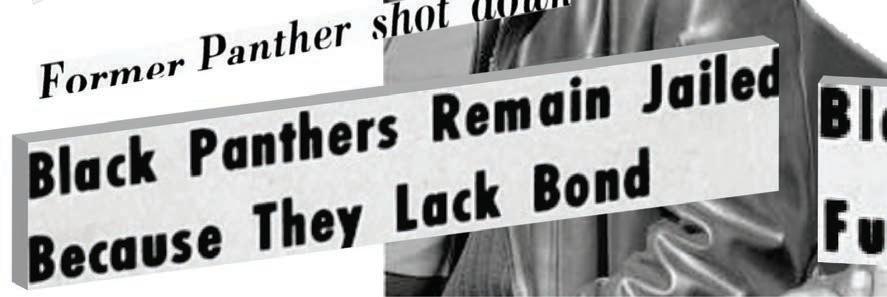
11 minute read
Know Arapahoe
community of Byers to Colorado’s secondlargest city, Aurora, to the western suburbs, our county o ers a unique diversity of landscapes, industries, recreation opportunities and people. at diversity is one of the many reasons so many people have chosen to call Arapahoe County “home.”
In fact, Arapahoe County is expected to add another 200,000 people by 2030 and grow from 600,000 to 800,000 residents. Our appeal to our new neighbors is both understandable and challenging. Meeting the needs of this growing county with the economy’s ups and downs can be daunting. It becomes even more formidable as we realize biased reporting lies with the editors and a biased sta . e paper identi es 25 people contributing to this series. I can’t help but wonder where people like these journalists come from. For me, I don’t personally know anyone whose as severely handicapped with racial prejudice about identity politics as the publishers of this article.
Smith Young Parker
Housing and diversity
Kudos to Colorado Community Media for a piece of ne local journalism with “ e Long Way Home” series examining Colorado’s housing crisis. e January 26 articles detailing racial inequities in Denver’s suburban communities like the Littleton area, where I live, provide important insight — and highlight the need for all of us to redouble e orts for social change.
As the series illustrates, Littleton and surrounding towns didn’t become lily-white by accident. Government policies assured racial and economic segregation via redlining, racially restrictive covenants, and large-lot zoning. Today, Denver metro is highly racially segregated, ranks 13th among the most highly economically segregated urban areas, and 40th among U.S. large metro areas for upward mobility of below-median-income families.
Today’s a ordable housing emergency is compounded for our Black, boss, partner, co-worker or the manager of a store where you frequently shop what is broken or needs to be managed better or di erently? Or would you rather someone else take that responsibility? I would love to hear your story at gotonorton@gmail. com, and when we can be open to managing and xing what we know to be broken, it really will be a better than good life. the magnitude of the issues we must address: housing a ordability, mental health, criminal justice, homelessness, crumbling infrastructure and roads. ese are big, complex issues that we simply cannot ignore. How do we meet the challenge? It starts with listening to you and identifying our shared priorities. A sincere thank you to the residents who took time out to join our most recent telephone town hall and o er your opinions. When asked, 37% of you named crime as the most important issue facing the county followed by homelessness and a ordable housing (26%), roads (15%) and mental health (10%). ese are our priorities too. ese priorities come at a cost. And despite our long tradition of doing more with less, our shared priorities require additional resources. For decades, we have pursued e ciencies, innovations, cost-savings, and continuous improvements when managing resources. is practice has earned





Michael Norton is an author, a personal and professional coach, consultant, trainer, encourager and motivator of individuals and businesses, working with organizations and associations across multiple industries.

Latinx, and Native American neighbors who face historical barriers designed to exclude them from generational wealth-building as well us a track record that includes awards, consistently high bond ratings and balanced budgets. e question now is how we secure the resources we need to achieve our goals. e Board is taking a serious look at how best to modernize and stabilize our revenue stream, to help meet the priorities that will ensure Arapahoe County continues to be the number one place to live, work and raise a family. as present-day ingrained prejudices. is is not a healthy situation for our
In the coming weeks and months, we look forward to engaging with you as we navigate a path forward. I hope you’ll join us and learn more about your county government, voice your opinion and ask questions on our next telephone town hall event. Please look for future telephone town hall events on the county website or follow us on social media.
BY CORINNE WESTEMAN CWESTEMAN@COLORADOCOMMUNITYMEDIA.COM
While working out at a gym in Golden recently, someone approached Ty Scrable and asked if he was associated with Colorado School of Mines. Scrable had to explain that, no, he’s just a Golden resident.
Unfortunately, Scrable said, this isn’t the rst time it’s happened.
“I get that a lot,” he said. “People think I’m a student, professor or tourist because I’m Black.”
Systemic racism stubbornly remains in Golden. But, as Scrable said, it has morphed from Ku Klux Klan demonstrations in the 1920s and racist housing policies in the 1940s to something less overt but still widespread and endlessly frustrating.
Because White people make up the overwhelming majority in the city and, thus, are seen as the norm, Scrable said, “many people don’t view me as part of my own community.” e newspaper, which now is part of Colorado Community Media, isn’t immune to biased coverage. is report is the product of its journalists attempting to examine the paper’s coverage of the Black community since the Civil Rights era and own up to its mistakes.
In the wake of Black Lives Matter demonstrations in the summer of 2020, many cities and newspapers across the United States have started reckoning with their pasts, examining how they’ve contributed to systemic racism, learning what they can do to be more inclusive and fair. e Golden community has started the process, and now it’s the Golden Transcript’s turn.
Since 1866, the Golden Transcript — known as the Colorado Transcript for its rst 103 years — has been a record keeper for Je erson County. While its stories are extensive and valuable, the paper contains original and reprinted content that was harmful to the Black community and other marginalized groups.
Just one example is its coverage of the Black Panther Party, a group that gained national attention in the late 1960s for its response to policing in Black communities across the country.
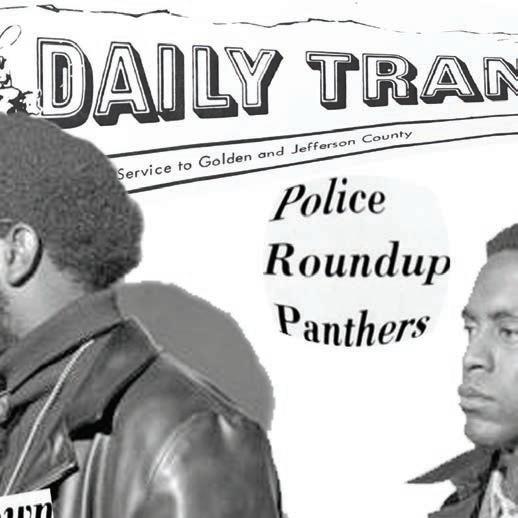
Between 1969-1971, the newspaper published approximately 170 articles that referenced the Black Panther Party. Nearly all of these articles
BEYOND THE GOLDEN TRANSCRIPT: Our efforts to reconcile racial mistrust begins with this story
In our newspaper this week, you’ll see an article about the Golden Transcript. It’s one of two dozen newspapers owned by Colorado Community Media, which also owns this paper. The article tackles the issue of systemic racism in the Transcript’s pages.
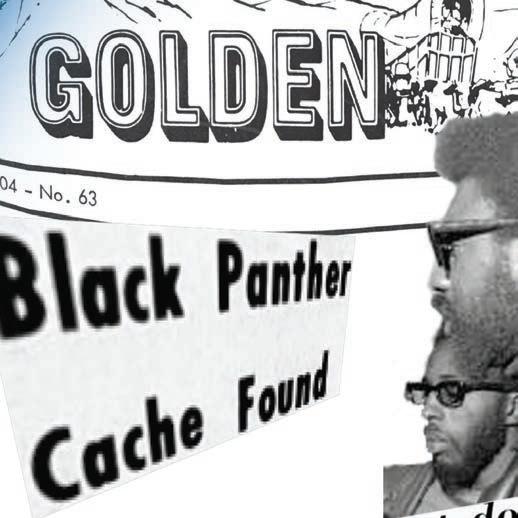
The idea for the project started in 2020, when the Colorado News Collaborative, Colorado Media Project and Free Press convened the Black Voices Working Group, which was made up of Black leaders, community members and journalists. The group addressed media coverage and focused on how to improve trust in mainstream media among the Black community. Acknowledging past harm was the No. 1 recommendation made by the group.
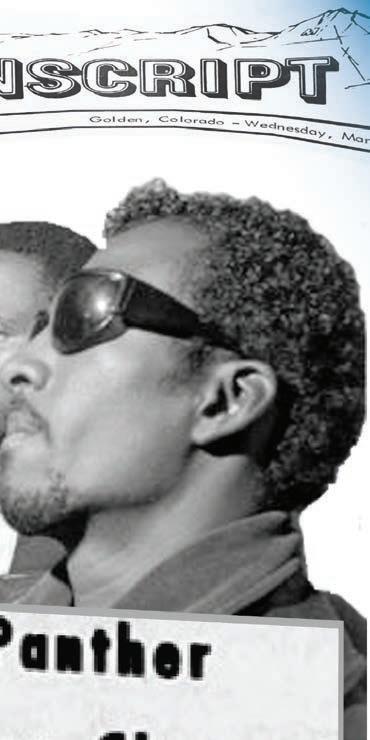
A few months later, I attended a Denver Press Club event where Jameka Lewis, a senior librarian at the BlairCaldwell African American Research Library, illustrated biases in mainstream local media coverage of the Black Panther Party in the 1960s and ’70s while exhibiting rare prints of the Black Panther Press. Many of Lewis’ examples came from the Transcript. Most articles were wire stories from other cities, but editors still chose to run them, affecting perceptions of the party in Golden.
We pursued and were awarded a grant from the nonpartisan Colorado Media Project to explore, uncover and analyze this issue in the form of the special report that is in this edition of your newspaper.
Our newsroom, which is predominantly White, also participated in the Maynard Institute’s diversity, equity and inclusion Fault Lines training along the way. West metro editor Kristen Fiore was a speaker at the Advancing Equity in Local News convening with journalists from publications like the Philadelphia Inquirer and the Washington Post to talk about this project.
We believe this story is important beyond Golden — and we hope to spark conversations in our communities across the Denver area about race and inclusion and how our news coverage impacts those issues.
Linda Carpio Shapley is publisher of Colorado Community Media, which runs two dozen weekly and monthly publications in eight counties. She can be reached at lshapley@coloradocommunitymedia.com presented the group in a negative light, with words such as “fugitive,” “thugs” and “militants.” And, the Transcript appeared to rarely cover the Black community in the city and wider region. Because of this, their voices are missing in archives, now online as an important chronicling of Colorado’s history.
By not including these voices in an accurate light, and by publishing stories that reinforced harmful stereotypes and/or recorded Black people’s traumatic experiences in an apathetic or ippant way, the Golden Transcript’s coverage contributed to systemic racism, according to researchers and Black community leaders.
Jameka Lewis, senior librarian at the Denver Public Library’s Blair-Caldwell African American Research Library and a freelance researcher on this report, said Transcript readers may have had their beliefs about the Black Panther Party, and the Black community in general, shaped by the Transcript’s negative portrayals.
“ ere is harm when it comes to media and the Black community in Denver and Colorado,” Lewis said. “If we want to repair the harms, we have to acknowledge that (they are) factual.”
Alfonzo Porter, editor-in-chief at Denver Urban Spectrum and a journalism professor at Metropolitan State University of Denver, said mass media has been at the epicenter of “propagating negative images and re ections of the AfricanAmerican community.”
“It really stems out of our country’s background, and we’re still dealing with those biases,” he said.
While almost all of the Transcript’s stories about the Black Panther Party were from wire services like United Press International, Porter said the Transcript and other newspapers are accountable for reprinting those stories.
“It’s exactly like original reporting, because … the editorial sta sat in a room, looked at this piece, determined that it was appropriate and ran with it in the paper,” he said.
The Black Panther Party e Black Panther Party for Self Defense started in 1966 in Oakland, California. Founders Huey P. Newton and Bobby Seale started the organization as a response to police brutality there and in other Black communities, according to Lewis’ research. e party had a 10-point program that included demands for Black liberation and societal
The Coverage
How national, Denver-area papers covered the party Sisters Ida Daniel, Pat Rogers and JoEllen Greenwood grew up in Denver and graduated from East High School in the ’60s and early ’70s. ey recalled reading e Denver Post and Rocky Mountain News and watching the nightly news on TV. ey also listened to the city’s Black radio station, KDKO, and read Black-oriented magazines like Ebony and Jet.
Overall, the three didn’t recall a lot of news stories about Black people in the mainstream press, unless it was negative. e news covered Black people who were arrested for murder, robbery, rioting and other crimes. Rogers summarized the coverage as: “Be afraid of Black people.” at kind of coverage played out with the Black Panthers. In 2016, e New York Times analyzed stories about the Panthers, noting “journalists were at once fascinated and frightened by them” and their activities in the 1960s and ‘70s. Coverage about the Denver Panthers in Black newspapers in the area at the time was scant. Of those Lewis researched, the Black-owned publication e Denver Blade published the most articles on the group’s activities, both locally and nationally, in 1969.
Its coverage appears to be fairly balanced, Lewis said.
One Blade article discussed the Panthers’ orga- improvement. Eventually, the Black Panthers led more than 35 community programs across the country, like the Free Breakfast for School Children Program — also known as e Free People’s Food Program, which helped feed Black children from economically disadvantaged families.
In Denver, a chapter gained recognition in 1967. Led by Lauren Watson, the chapter’s history was largely erased or ignored, Lewis said, adding that the Denver Panthers were instrumental in the ght for civil rights in Colorado.
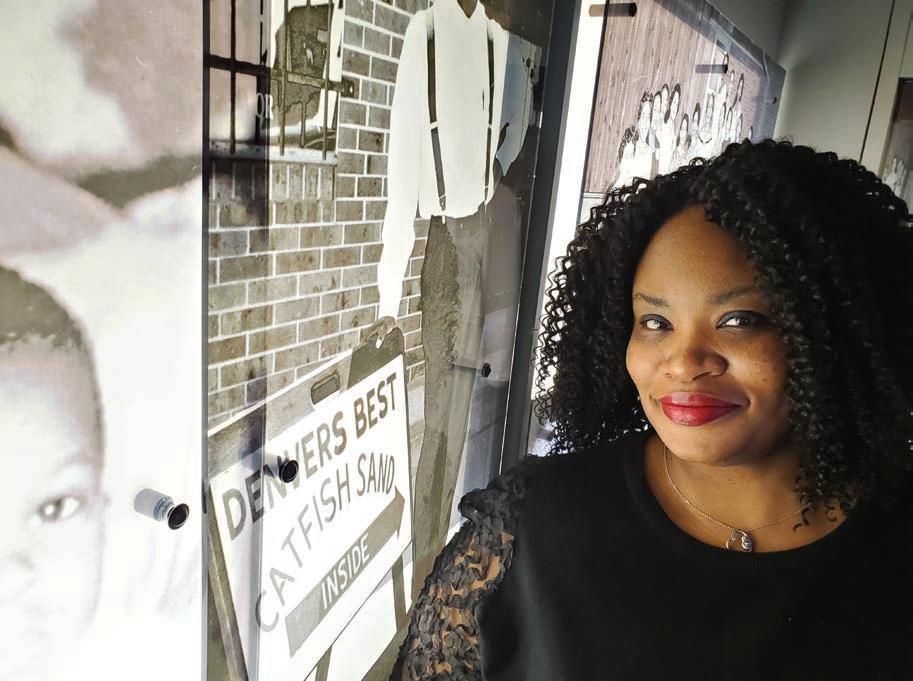
It’s important to note that many Black community members both then and now have mixed feelings about the Panthers and their work, Lewis stressed.
Longtime Denver residents she interviewed formed their opinions largely based on what they read about the Black Panthers in newspapers and saw on TV. Yet that coverage contrasts with what many in the community saw the Denver Black Panthers doing. ey were involved in school board and City Council meetings, provided free meals for children, and worked to nizing a meeting to discuss policing and police presence at Cole Jr. High School in Denver’s diverse Whittier neighborhood. It chronicled the Black community’s e orts to address a racial gap between teachers and Black students. One possible solution, and likely at the suggestion of the Denver Black Panthers, was to establish Cole as a Freedom School, a concept that focused on Black pride and Black liberation in academics.
In contrast, the Denver Post also covered the meeting but didn’t mention the Panthers’ involvement in organizing the event or the Freedom School proposal. In a review of Post archives, the story focused on arrests. e Denver Blade coverage did not mention any Black Panther arrests.
“Oftentimes, it was up to Black news media to cover this group in a more comprehensive way, which I believe e Denver Blade did,” Lewis said. “It covered all aspects of the local and national Panthers, and o ered readers a more balanced view of the members of this group.” e Denver Blade stopped operating in 1970.
How Golden’s newspapers covered the Panthers e Transcript published approximately 170 articles that used the terms “Black Panther” or “Black Panthers” between 1969-1971. Almost all of these were reprinted stories from wire services, which seldom described anything positive about the party or its members. improve the welfare of their neighborhoods and its residents.
“Many Black people believed what the media said about the Panthers,” said Terry Nelson, a lifelong member of the Denver community. “ … It depended on the source. We recognized that the newspapers weren’t telling the truth about the members. … We knew that the Denver members were active in schools, speaking with teachers and parents. We never saw that in the major newspapers.”
Tracie Keesee, a former Denver police captain and co-founder of the Center for Policing Equity, described how during this tumultuous period, the press played into the hands of government o cials.
Newsrooms considered police as trustworthy and well-respected sources, so it was easy for them to hand reporters a story and have it taken at face value, Keesee said.
Keesee added: “We see it now, right? at divisiveness in the media, the stories that are being told — or not being told.” e only article referencing the party’s free breakfast program was published April 30, 1970, about Baltimore police rounding up Black Panthers suspected of killing a patrolman. After searching party headquarters, police searched a school where it conducted its breakfast program, among other locations. e coverage used negative language to describe the Panthers, their neighborhoods and any activities they were involved in. Because of this, Golden-area residents absorbed and believed what they heard and saw in the news coverage, Lewis stated. e role of the press in forwarding racial inequality really shouldn’t be a surprise to anyone, Keesee said, especially to communities of color.
In contrast, the Colorado School of Mines student paper, e Oredigger, published at least two stories about the Black Panther Party. Both were straightforward accounts of Lauren Watson, the head of the Denver chapter, visiting Golden.
Ultimately, while coverage of the Black Panthers varied by publication, the Golden Transcript failed to cover the party’s community initiatives or involvement. It did, however, print dozens of wire stories about the party’s supposed criminal activity and police raids associated with the group.
“It’s not just that person that wrote the story,









